| Description |
Topotecan Hydrochloride (SKF 104864A; NSC 609669) is a Topoisomerase I inhibitor with potent antineoplastic activities.
|
| Related Catalog |
|
| Target |
Topoisomerase I
|
| In Vitro |
Topotecan (SKF 104864A) obviously inhibits proliferation of not only human glioma cells but also glioma stem cells (GSCs) in a dose- and time-dependent manner. According to the IC50 values at 24 h, 3 μM of Topotecan (SKF 104864A) is selected as the optimal administration concentration. In addition, Topotecan (SKF 104864A) induces cell cycle arrest in G0/G1 and S phases and promoted apoptosis. Results show that the cell viability is inhibited by Topotecan (SKF 104864A) in a dose-dependent manner. 2, 20 and 40 μM of Topotecan (SKF 104864A) obviously inhibits the cell viability compared with the control groups. The IC50 values of Topotecan (SKF 104864A) at 24 h are 2.73±0.25 μM of U251 cells, 2.95±0.23 μM of U87 cells, 5.46±0.41 μM of GSCs-U251 and 5.95±0.24 μM of GSCs-U87. Thus 3 μM of Topotecan (SKF 104864A) is selected as the optimal administration concentration in the subsequent experiments[1].
|
| In Vivo |
NUB-7 metastatic model, the animals belonging to all the 4 groups are sacrificed after 14 days treatment. Compared with the control, Low dose metronomic (LDM) Topotecan (SKF 104864A) and TP+Pazopanib (PZ) liver weights are significantly lower in TP+PZ-treated animals, compared with PZ. Microscopic tumors are visible in the livers of mice belonging to all the groups except TP+PZ confirming the ability of Topotecan (SKF 104864A)+PZ to control liver metastasis. In a previous dose-response study, the daily dose of oral metronomic Topotecan (SKF 104864A) (0.5, 1.0, and 1.5 mg/kg) causes greater reduction in microvascular density compared with weekly maximum-tolerated dose regimen (7.5 and 15 mg/kg) in an ovarian cancer model, but the mice treated with 1.5 mg/kg daily, oral Topotecan (SKF 104864A) show decreased food intake, and a lesser antitumor effect[2].
|
| Cell Assay |
The U251, U87, GSCs-U251 and GSCs-U87 cells are seeded at a density of 2×104 cells per well in 96-well plates separately, and incubated for 24 h. Cells are administered with Shikonin and Topotecan (SKF 104864A) (0.02, 0.2, 2, 20, 40 μM). After the treatment, 10 μL of cell counting kit-8 (CCK-8) is added into each well for additional 1-hour incubation at 37°C. The optical density (OD) is read with a microplate reader at 450 nm[1].
|
| Animal Admin |
Mice[2] For subcutaneous xenograft studies, we used SK-N-BE, SH-SY5Y, KHOS, and RH30. 1×106 cells are implanted subcutaneously into the inguinal fat pad of each of nonobese diabetic/severe combined immune deficient (NOD/SCID) mice. When tumors reached 0.5 cm in diameter, the animals are randomized into 4 groups and treated daily by oral gavage. The animals are grouped as: Control group, LDM Topotecan group or LDM TP (1 mg/kg Topotecan), Pazopanib group or PZ (150 mg/kg Pazopanib) and combination group or TP + PZ (1 mg/kg Topotecan (SKF 104864A) + 150 mg/kg Pazopanib). To compare pulse Topotecan with LDM TP in KHOS osteosarcoma model, PZ is replaced by weekly oral dose of pulse Topotecan or Pulse TP (15 mg/kg Topotecan). The criteria for endpoint are tumor sizes exceeding 2.0 cm in diameter or animals showing signs of morbidity. The tumor sizes are measured on a daily basis until the endpoint or sacrifice. The long (D) and short diameters (d) are measured with calipers. Tumor volume (cm3) is calculated as V=0.5×D×d2. When the endpoint is reached or at the end of the treatment, the animals are sacrificed by cervical dislocation.
|
| References |
[1]. Zhang FL, et al. PLoS One. 2013 Nov 26;8(11):e81815.Topoisomerase I inhibitors, Shikonin and Topotecan, inhibit growth and induce apoptosis of glioma cells andglioma stem cells. [2]. Kumar S, et al. Metronomic oral topotecan with pazopanib is an active antiangiogenic regimen in mouse models of aggressive pediatric solid tumor. Clin Cancer Res. 2011 Sep 1;17(17):5656-67.
|
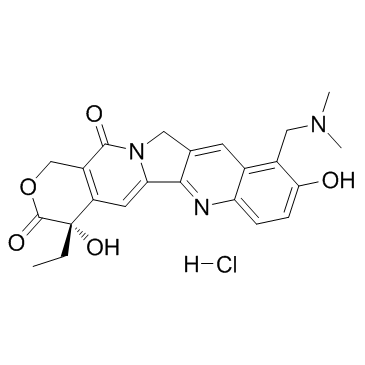
 CAS#:75-09-2
CAS#:75-09-2 CAS#:19685-09-7
CAS#:19685-09-7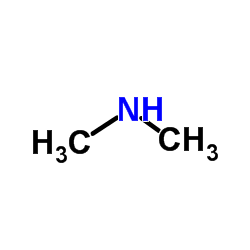 CAS#:124-40-3
CAS#:124-40-3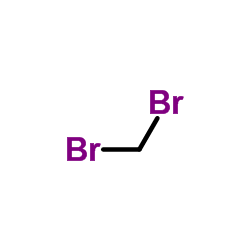 CAS#:74-95-3
CAS#:74-95-3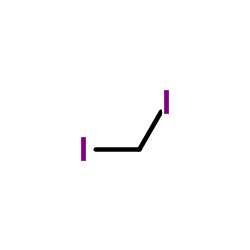 CAS#:75-11-6
CAS#:75-11-6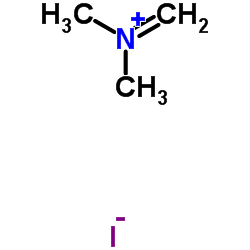 CAS#:33797-51-2
CAS#:33797-51-2![(S)-10-((Dimethylamino)methyl)-4-ethyl-4-hydroxy-3,14-dioxo-3,4,12,14-tetrahydro-1H-pyrano[3',4':6,7]indolizino[1,2-b]quinolin-9-yl acetate Structure](https://image.chemsrc.com/caspic/478/123948-88-9.png) CAS#:123948-88-9
CAS#:123948-88-9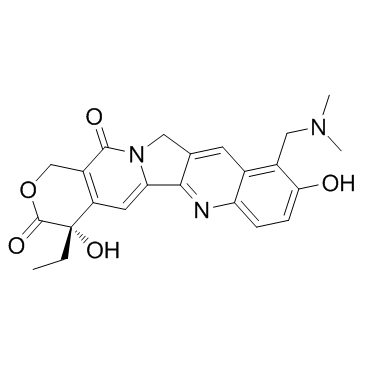 CAS#:123948-87-8
CAS#:123948-87-8 CAS#:50-00-0
CAS#:50-00-0
